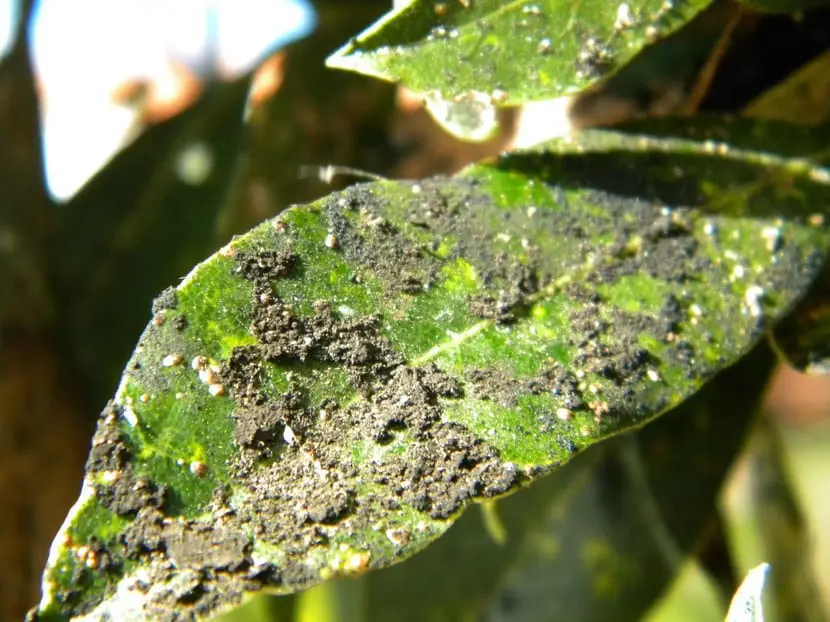Some of the most common plant diseases are caused by fungi . Mold is one of the most frequent, a type of fungus that attacks a large number of species, especially those that suffer frequent attacks by insects.
What is bold?
Also known as Sooty mold, Negreo and Hollín, this fungus attacks plants that are attacked by biting insects as it develops on the remains of molasses or sugary secretions that they leave behind. Pests such as aphids, whiteflies or mealybugs secrete a sweet substance in which the bold are then deposited.
It is common for it to appear on the leaves, fruits, buds and stems, although it can also be detected in areas close to the plant such as walls and floors. The good news is that it is easy to distinguish the bold because it is enough to detect a dry and black powder similar to soot , dark and that when rubbed with the fingers it disappears.

The good news is that it is not a serious disease since the main drawback is aesthetic. However, it is important to control the attack because in more serious cases the fungus can affect photosynthesis and slow down the growth of the plant.
Measures and precautions
Plants that are more resistant to pest attack hardly suffer from bold, but the rest of the specimens do. To avoid it, you have to be vigilant, keeping away the insects that cause pests. Organic fertilizer and natural mulch also help as they increase the plant’s defenses.
Another important point is irrigation, as it will have to be precise in order to avoid puddles and humidity, which give rise to the appearance of fungi.
In case of detecting black powder, it is best to prune the affected parts of the plant . In addition, the plant must be washed with a mixture of water and neutral soap or, in the event that the plant may be affected by the soap, it is best to wash it with pressurized water.


